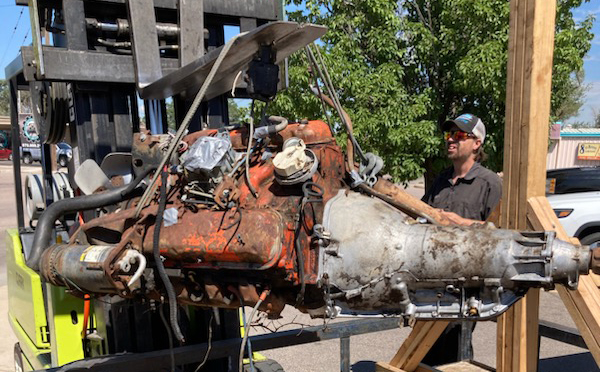Here’s a general outline of a custom engine build:
1. **Select a Goal**: Determine the primary purpose of the engine build. Are you aiming for high horsepower, torque, or a balanced combination of both? This will guide your component choices.
2. **Engine Block**: Start with a Chevy 454 engine block. Depending on your budget and preferences, you can opt for a factory block or an aftermarket performance block designed to handle higher power levels.
3. **Cylinder Bore and Stroke**: Increasing the bore and stroke can significantly impact the engine’s displacement and power output. Stroker kits and oversize pistons are commonly used for this purpose.
4. **Crankshaft and Connecting Rods**: Choose a forged steel crankshaft and connecting rods to handle increased power and durability. The crankshaft’s stroke length may be adjusted based on your goals.
5. **Pistons**: High-quality forged aluminum pistons are preferred for their strength and heat resistance. The choice of piston design will depend on your compression ratio requirements.



6. **Cylinder Heads**: Performance cylinder heads are crucial for airflow and combustion efficiency. Choose aftermarket heads with larger intake and exhaust ports, as well as optimized combustion chambers. Consider aluminum heads for weight savings.
7. **Camshaft**: Select a high-performance camshaft that matches your goals. Camshaft profiles influence power band characteristics, so choose one that suits your intended use, whether it’s for street driving or racing.
8. **Intake Manifold**: An aftermarket intake manifold designed for high-flow and matched to your camshaft and cylinder heads will optimize air and fuel delivery.
9. **Carburetor or Fuel Injection**: Depending on your preference, you can go with a high-performance carburetor or modern fuel injection system. EFI systems offer precise tuning capabilities and improved drivability.
10. **Exhaust System**: A performance exhaust system with headers, larger-diameter pipes, and high-flow mufflers is essential for maximizing horsepower and torque while enhancing engine sound.
11. **Ignition System**: Upgrade to a high-performance ignition system with a multi-spark CDI (Capacitor Discharge Ignition) or modern electronic ignition for improved spark control and reliability.
12. **Cooling System**: Ensure your engine stays cool with a high-capacity radiator, electric fans, and a quality water pump.
13. **Oil System**: Use a high-capacity oil pan, high-flow oil pump, and an oil cooler if necessary to maintain proper lubrication and temperature control.
14. **Accessories and Accessories**: Install upgraded components such as high-flow water and fuel pumps, a high-torque starter, and an alternator suitable for increased power demands.
15. **Tuning and Dyno Testing**: Once the engine is assembled, it’s crucial to have it professionally tuned on a dyno to optimize air-fuel ratios, ignition timing, and other parameters for peak performance and reliability.
16. **Balancing and Blueprinting**: Precision machining and balancing of internal components are essential for smooth operation and longevity.
17. **Final Assembly and Testing**: Carefully assemble the engine, ensuring all components are properly torqued, and thoroughly test it before installation in the vehicle.
18. **Transmission and Drivetrain**: Upgrade the transmission, rear differential, and other drivetrain components to handle the increased power, torque, and stress.
19. **Fuel System**: Ensure the fuel system can supply the engine with the required amount of fuel, which may involve upgrading the fuel pump, lines, and injectors.
20. **Exterior and Aesthetics**: Consider customizing the engine’s appearance with polished components, custom valve covers, and other aesthetic touches.
Building a custom Chevy 454 engine is a complex and rewarding endeavor. The specific components and modifications will vary depending on your goals and budget, but attention to detail, proper tuning, and expert assembly are key to achieving the desired performance and reliability.
